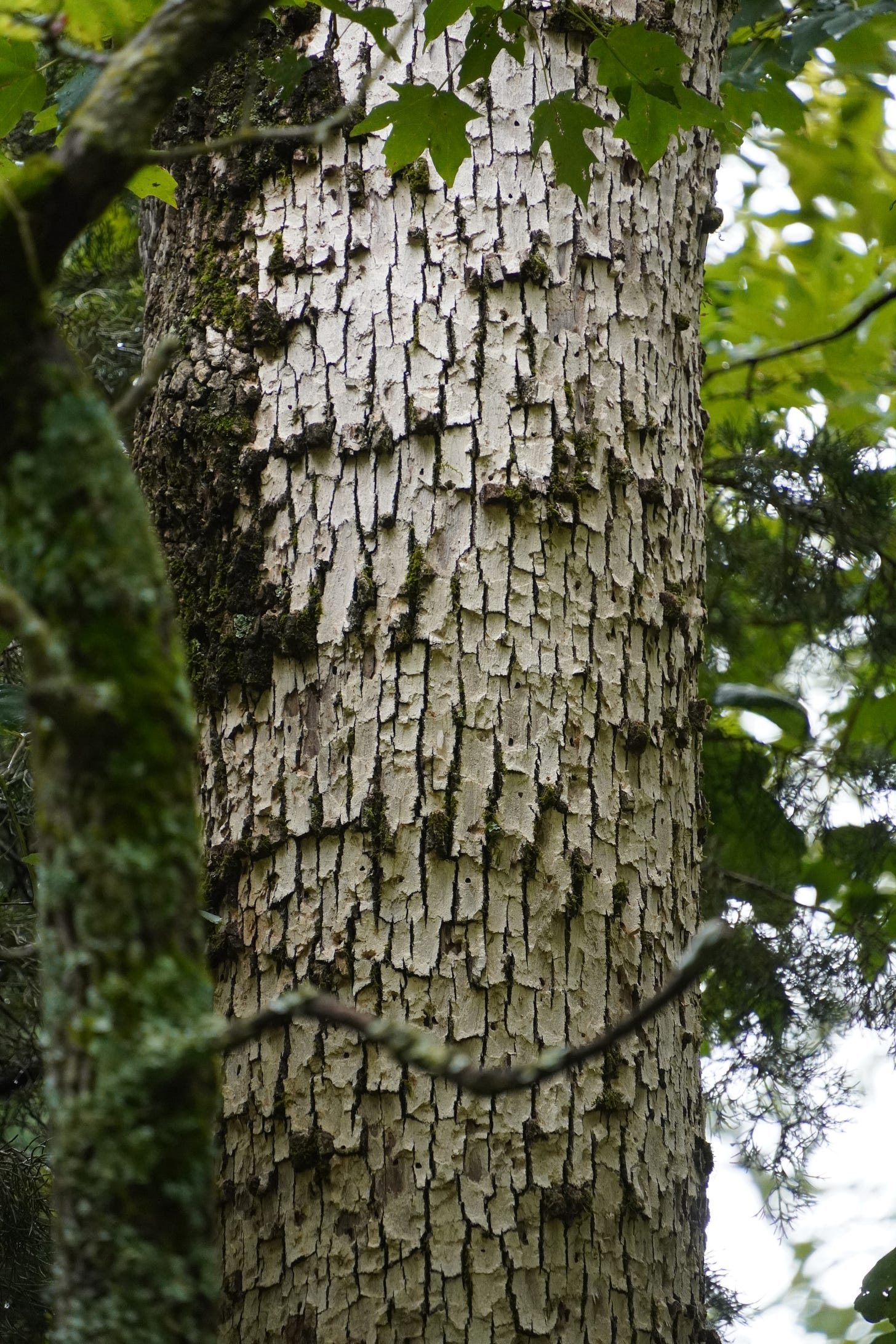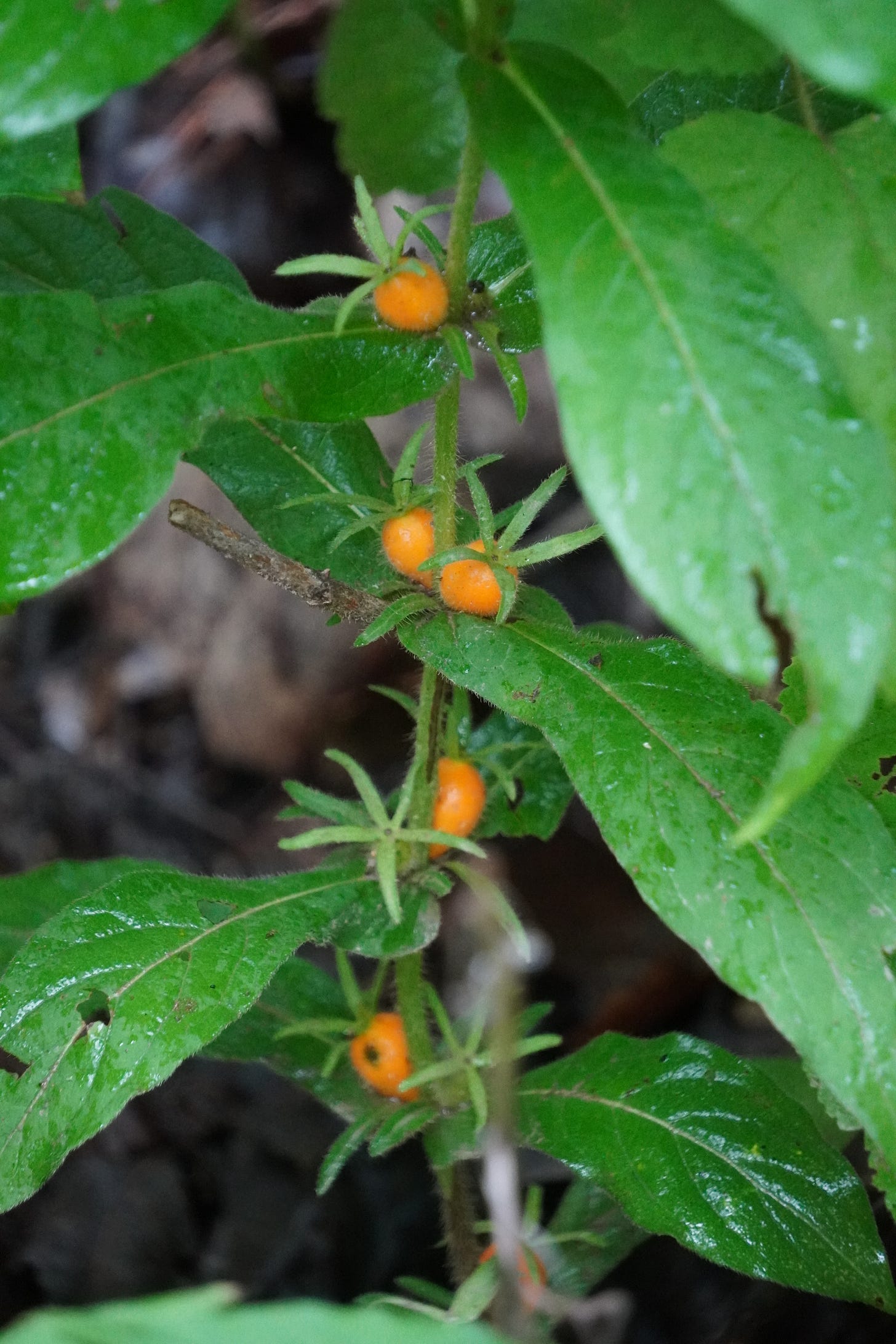Eagle Rock & Glade Continuums // Field Notes: July 2025
Just fifteen minutes south of Roaring River SP, one stretch of the National Forest carries you across a ridgetop that is interspersed with dissected hills of lush forest, the roadcuts having more open, savanna-style flora in bloom along them, and further east, a small section of shallow glades. Based on the name and its reference to the populations of Sugar Maples in the area, you might assume that it’s entirely a mesic forest with little openness, but that couldn’t be a more inaccurate description of the area.
Many people assume that roadside mowing is intrinsically a bad thing, and that it sets back native plants. Although frequent mowing can certainly degrade habitat extensively, it isn’t intrinsically a bad thing, and many species that are in decline due to woody encroachment are able to persist along mowed areas, particularly on rural highways and National Forest backroads. Mowing is directly what keeps the areas they grow in open. Without it, they would be shaded out and die. For a high profile example, the first time I ever saw Moore’s Larkspur (Delphinium newtonianum), it was growing directly along the main highway of the area it’s endemic to. Mowing, and even haying, can be used strategically for management, although obviously there is a large degree of randomness to how the county highway departments choose to time their mowing regimes; adverse impacts are more likely than they could be, and the outcomes are usually less than ideal. Still, that doesn’t make them ruinous.
Today, the road was dotted by tons of Wild Potato Vine (Ipomoea pandurata), which deserves a far nicer common name than it currently has. This weedy species sprawls with far-stretching vines, and where there are a few plants, you can often find hundreds of flowers in the general vicinity, particularly on these mowed roadsides where the vines are cut and able to re-sprout.
It is a favorite food source of bumblebees, which crawl into the flower’s deep corolla. Courtesy of off-and-on rain showers throughout the day, they provided a little bit of shelter for Carpenter Bees, although many were already drenched.
Farther off of the road, where the canopy is far more closed, there were patches of Hylodesmum in densities I’ve never seen before. These plants were formerly considered to be in the genus Desmodium, which they generally resemble. For now, both genera are commonly called tick-trefoils, for their three-part leaves and their seeds’ habit of sticking like velcro to passersby. I believe the one photographed below is Naked-flowered Tick-trefoil, Hylodesmum nudiflorum.
Plants like this, which have several phenological states going on at once— some parts are in bud, while others are fully in flower, and others still are often in fruit— are said to have an indeterminate inflorescence. It’s incredibly convenient for identification purposes to have a plant with all of these different states visible. Of course, with this genus, you ideally would have a photo of the flowers from the front…
Woodland sunflowers were present along the roadside as well, of course. Nearly any place in the Ozarks is currently covered in their bright yellow flowers.
The sunnier curves of the road had plenty of sun-loving savanna species, including Big Bluestem (Andropogon gerardi) that were beginning to send up flowering spikes. In most areas, Little Bluestem is the most common grass around, only losing dominance to Silver Bluestem or Broomsedge, so this was an unexpected sight.
Besides Big Blue, the only other noticeable grass in the area was the freshly flowered Purple-top Grass (Tridens flavus). Many plants in the area hadn’t fully unrolled their inflorescences.
Since this area is minimally impacted by invasive species due to its location inside a National Forest, even the parts of the roads that are basically ditches to reduce erosion have some interesting plants in them, particularly species that are more dependent on having a decent amount of moisture available to them at any time. The diversity of species, particularly native ones, is surprisingly high.
Although some individual species show this more clearly than others, plants in the genus Hypericum, which we generically call St. John’s Wort, are distantly related to roses. Both the Shrubby St. John’s Wort (Hypericum prolificum) and Round-fruit St. John’s Wort (Hypericum sphaerocarpon) have dense tufts of stamens that encircle the center of each flower, a holdover of that rosid heritage.
Compass Plant was a fairly common sight throughout the entirety of the stretch between this part of Missouri and Eureka Springs, at least in places that consistently received full sun throughout the day.
White Prairie Clover (Dalea candida) was incredibly prevalent around the area.
Like the prairie clovers, some of the plants around were those more commonly seen on glades.
To add to the list of DYCs, there were a few Silphium species around as well, particularly the kind that more starkly resemble true sunflowers (Helianthus spp.).
In addition to the Purple Joe Pye Weed (Eutrochium purpureum) that was in bloom, there was an aberrant ironweed— in this case, Western Ironweed (Vernonia baldwinii)— with pink flowers and nearly-whorled flowers in front of one area cleared for an overlook.
Like anywhere else in the region, this ridgetop was marred by the sight of still-standing ash trees infected by Emerald Ash Borer, an invasive insect.
Because ash trees are so common, and the beetles have a nearly-100% kill rate, the bleach blonde stripes of flaked-off bark is a constant sight. Once you notice one, you’ll see a few hundred others.

Further along, at a lower elevation with more shade, something small and orange stood out at a great distance— the brightly colored fruit of a horse gentian! Despite the name, they aren’t gentians or particularly closely related to them; they are actually in the same family as honeysuckles and cornsalads.

Perhaps because of roadside mowing, there were a number of Common Dogbane (Apocynum cannabineum) plants that only grew vertically by a few inches and then sprawled horizontally.
Every now and then, another patch of the roadside would have a little hint of glade flora again.
Past a few campsites within the National Forest, there are glade openings that are entirely devoid of woody species. Little patches that, earlier in winter, had nothing but a smothering of Witch Grass (Panicum capillare) evidently are where RVs and other vehicles get parked in the summer…
Outside of those disturbed areas, however, the flora quality is surprisingly good, at least for a place that frequently has dumped trash and always has errant four wheeler tracks running about. At least one of the denser sets of tracks had created a little patch of compressed soil that held a number of moisture-loving species, namely a few Juncus species and the tiny Obi-wan Conobea (Leucospora multifida), which was less common on the main parts of the glade.
All of the glades were covered in massive patches of Pasture Heliotrope (Euploca tenella), a tiny plant with silvery blue leaves that are hardly noticeable when not flowering.
Although many leaves of vegetative plants were around, there was only a single Missouri Evening Primrose (Oenothera macrocarpa) in flower, leading me to wonder if someone had discarded a plastic flower on the glade until I walked over to see what it was…
Plenty of tall American Agave (Manfreda virginica) plants were in a mixture of flower and fruit across the glade. A couple were backed up by last year’s flowering stalks that were still standing, despite the sun exposure breaking down their woody stems significantly.
And of course, there were prickly pear cacti.
Green Comet Milkweed made a reappearance in a more expected habitat.
A new milkweed for the day grew here: Horsetail Milkweed (Asclepias verticillata).
Some of the forested edges enclosing the glade had Antelope Horns Milkweed (Ascelpias virids) in fruit as well. One was speckled with milkweed bugs, which evidently had devoured the interior contents of the hull. Although they destroy the seeds, these bugs are native and part of the natural cycle of milkweed plants.
The edges of a glade often have shrubs that are strongly associated with glades growing along them; although this habitat type is generally devoid of woody species, it’s never completely lacking. A few species that are fire-adapted and don’t mind the high contrast climate grow quite well even in managed glades, like Gum Bumelia (Sideroxylon lanuginosum), Fragrant Sumac (Rhus aromatica), and Missouri Maidenbush (Phyllanthopsis phyllanthoides).
A couple of other notable species from that set of glades include Lemon Beebalm (Monarda citriodora), Spanish Needles (Palafoxia callosa), Ebony Sedge (Carex eburnea), Missouri Black-eyed Susan (Rudbeckia missouriensis), and Lady Bird’s Centaury (Zeltnera texana). I’ve never seen the latter of those before, and am not entirely sold on it not being a Centarium. For some reason, Zeltnera doesn’t even appear in Weakley’s keys, and the characters in a separate flora are kind of questionable to my inexperienced eyes.
At a gas station on the way back to Arkansas, someone had abandoned a bouquet of Hairy Wild Petunia, Butterfly Milkweed, and the invasive Japanese Knapweed.
Like many other places around, there were plenty of old Ozark Giraffes still standing… but this may be the first Giraffe barn I’ve seen!
The welcome signs along the Missouri border have far more stickers than any other set of them I’ve seen.
Although the roadsides along highway 23 down towards Eureka Springs were mostly full of the same species as were present in the Eagle Gap area, they were still enjoyable to drive.




















































